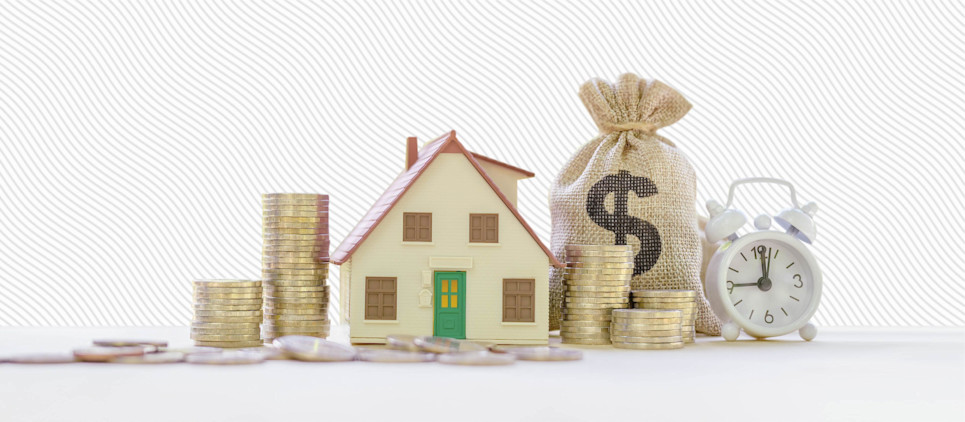What is mortgage amortization?
When you’re considering taking out a mortgage, you must understand its repayment terms. Most loans come with a loan principal amount (the money you originally agreed to pay back) and interest (the cost of borrowing the principal). What distinguishes repayment terms among loans is the balance of principal to interest.

Table of contents
What is an amortized loan?How to calculate an amortized loanAmortization rates for fixed-rate mortgages Amortization rates for variable rate mortgagesAmortization calculatorWhat is an amortized loan?
An amortized loan is a type of loan that involves making every payment according to the original loan amortization schedule and paying it off by the end of the term. The term “amortization” itself simply refers to the amount of principal and interest paid each month over the course of the loan term.
Near the beginning of the loan, most payments are applied toward interest. Over time, the balance shifts so that by the end of the term, nearly the entire payment is applied to paying off the principle of the loan. You’ll find this model of repayment in home loans, auto loans, and personal loans from banks.
How to calculate an amortized loan
The interest on an amortized loan is based on the most recent ending balance of the loan. As you make payments, the interest amount decreases and the principal portion increases. The way to calculate this is to multiply the balance of the loan amount by the interest rate in the current period (or divide an annual interest rate by 12 to find a monthly rate). Subtract the interest due for the period from the total monthly payment, and you’ll arrive at the dollar amount of principal to pay for the period.
The principal is applied to the balance of the loan. Subtract the principal paid in the period from the current balance of the loan, and you’ll see the new outstanding balance. This outstanding balance is what sets the interest for the next period. Amortized loans are structured differently, however, for fixed-rate and variable-rate mortgages.
Amortization rates for fixed-rate mortgages
As the name suggests, a fixed-rate mortgage doesn’t fluctuate with the market. In other words, the interest rate on a fixed-rate mortgage doesn’t move regardless of whether interest rates are rising or falling. The only variable is the amount of principal and interest you’ll pay each month.
At the beginning of the loan, that balance is weighted toward interest, and over time, you’ll pay more toward the principal. The interest rates for 15-year loans are lower than those for 30-year loans, so combined with a shorter timeline, borrowers will pay less in interest overall and build equity faster. The difference is that monthly payments will be larger than with a 30-year mortgage.

Amortization rates for variable rate mortgages
On an adjustable-rate mortgage, or ARM, your interest rate can go up or down at the end of what’s called a “teaser period,” or how long your interest rate stays fixed at the beginning of the loan. (Think of teaser periods with credit cards, in which you avoid raises in rates for a specific period.) The teaser period for a mortgage is typically five, seven, or 10 years.
Some ARMs include payment caps, which limit your monthly payment increase at the time of each adjustment, generally to a percentage of the prior payment. For instance, with a 6.5% payment cap, a payment of $100 could increase to no more than $106.5 in the first adjustment period, and $113 in the second.
When you look at loan repayment terms on ARMS, a 5/1 ARM would mean the initial rate would stay fixed for the first five years and change once a year after that. If the mortgage had caps of 2/2/5, that would mean the payment could go up 2% on the first adjustment and 2% on each subsequent adjustment, but not over 5% over the life of the loan. It is common for ARMs to have terms of 30 years.
Amortization calculator
Though many amortized loans are expressed in tables for reference, you can use an amortization calculator to see how much money you would pay in principal and interest over time. For instance, if you were to calculate a fixed-rate mortgage on a $225,000 home with a mortgage term of 30 years at 2.7% interest per year, you would pay $912.59 in monthly payments and total interest of $103,534.07 over the life of the loan.
Bungalow is the best way to invest and manage your real estate portfolio. We work with you to identify, purchase, fill, and manage residential properties—so that you can enjoy up to 20% more in rental income with a lot less stress. Learn more about Bungalow.
Ready to find your next home?
Move-in ready homes and a built-in community so you can feel at home, together — wherever you are.
Suggested articles



